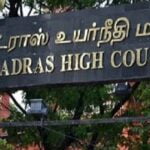Reforms of Lord Cornwallis, Governor General Lord Cornwallis’s journey from 1786 to 1793. It was recognized as a very significant and highly creative period for civil and criminal both the judicial system in Bengal, Bihar and Orissa in the Indian legal history. Principal of administration according to the law was introduced by the lord Cornwallis.
judicial system of 1787 | Reforms of Lord Cornwallis
The judicial system of 1787 was introduced during Warren Hastings’ governorship, after Warren had left, Cornwallis at India’s vest to direct all revenue, judicial and magisterial functions.
Provision of the act 1787 | Reforms of Lord Cornwallis
1. The number of districts was reduced from 36 to 23.
2. The scheme was introduced through two rules first revenue administration and second administration of justice.
3. In each district a company servent was appointed as collector to collect revenue as well as adjudicate revenue matters.
4. The judge also acted as a judge of the Mofussil court and as a magistrate within the district.
5. The Revenue Court was known as Mal Adalat. Appeals from the Mal Adalat give to the Boards of Revenue in Calcutta and finally to the Governor-General and the Council.
6. Appeals from the diwani Adalat, increasing the importance of Rs.1000 to the Sadar Diwani Adalat. Diwani Adalat consisted of a Governor-General and Council members.
7. An extension of the value of £5000 was to be kept with the king in the council.
8. A provision was made for appointing subordinates simply in each court known as the Register.They can decide up to 200 cases.
Reforms of lord cornwallis
Cornwallis code
The Cornwallis Code was a body of law passed by the East India Company in 1793. This code was developed by Lord Cornwallis who was the Governor of Bengal from 1786 to 1793.The Cornwallis Code is known for some important provisions that were made in it. These provisions were related to governance, law and order, judicial and civil administration.
Reforms in Different fields | Reforms of Lord Cornwallis

1. Judicial reforms of lord cornwallis
Cornwallis separated the judiciary from the executive and tried to bring justice to the common man. In judicial reforms he made the following reforms;
(i) Civil Courts
Disputes between civil and revenue suits were abolished and a regular hierarchy of courts was formed.
1. At the bottom was established the court of Munsiff’s who was an Indian. They could decide the case up to Rs.5.
2. A court of the Register of India was established over it, which could decide cases up to Rs.200.
3. Appeals from the register were made in the district courts where the British were judges. Judges decide cases with the help of people of Indian origin.
4. Regarding the District Courts, there were four Provincial Courts. Provincial courts were established at Patna, Dacca, Murshidabad and Calcutta. It could also decide on appeals from lower courts.
5. At the top was a Sadar Diwani Adalat where cases were decided by the Governor General and the Council with the help of a Chief kazi, two Muftis and two Pandits.
6. Overall this could be appealed to the King and the Council of Britain.
(ii) Criminal Courts
A Circuit Court in each district for criminal cases and four provincial courts were established in Patna,Dacca, Murshidabad and Calcutta. At the top the Sadar Nizamat Adalat was located.We can analyze the criminal jurisdiction by the following points :
(A) Three limbs : – The plan had three parts. was at the bottom of the ladder Magistrates in the districts. Above him were the Circuit Courts and the last criminal court was the Sadar Nizamat Adalat.
The venue of the Sadar Nizamat Adalat was shifted from Murshidabad to Calcutta. The Governor General and the members of the Council were to sit as judges in the Sadar Adalat.
They were to be assisted by Muslim law offices i.e. Qazi and Mufti, who had to interpret the law applicable to the circumstances of the case.The court was to meet at least once a week and maintain a regular diary of its proceedings.
(B) Reorganization : – All the districts in Bengal, Bihar and Orissa were arranged into four divisions of Patna, Calcutta, Murshidabad and Dacca. Four Courts of Circuit were established in the place of the existing moffusil fozdari adalat.
A Court of Circuit was to consist of two Company’s covenanted servants to try all the criminal cases. It was not a stationary but a moving court and went from district to district within the division trying the accused persons.
The Court of Circuit was to be assisted by Muslim law offices, kazi and mufti. To improve their efficiency, security of tenure was given to them which they had not enjoyed before. They could now only be removed by the order of the Governor General in Council for incapacity and misconduct
(C) Collector’s functionsthe : – Collector in each district was to act as a magistrate also. It was the duty of the Collector to arrest the accused person and hold inquiry into the circumstances of the crime alleged. If the offence committed was petty, the magistrate could award corporal punishment. If the crime was serious, the accused was to be tried by the Court ofCircuit.
(D) Crimes by British subjects : – As regards the arrest of the British subjects residing
in the mofussil and accused of committing crimes, and the provisions made in 1787 for the purpose were repeated. It was only in 1793 that the position improved somewhat in this connection.
(E) Inauguration of new system : – the new criminal judicial system was inaugurated on
1st January, 1791. Under the new scheme, the Governor General and members of the Council for the first time assumed a direct responsibility for the administration of criminal justice in Bengal, Bihar and Orissa.
Salaries of the judges and officers engaged in the administration of criminal justice were liberalized so that men of character and ability could be attracted to these officers and they might remain above temptation.
The new Courts of Circuit under the English judges was expected to deal with criminals in an effective, impartial and expeditious manner. The magistrates were to discharge their functions under the control of the Courts.
2. Administrative Reforms | Reforms of Lord Cornwallis
Lord Cornwallis focused on honesty and tried to reduce the expenditure in running the administration. He made some of the following reforms related to administration:
Many unnecessary posts were eliminated. Collectors were deprived of their right to deliver civil justice. It was handed over to either the revenue boards or the civil courts. Cornwallis was only considered to be of merit when making appointments to the services.
3. Police Administration | Reforms of Lord Cornwallis
Lord Cornwallis took away the rights of the landlords to maintain law and order. They established police posts at various places and placed policemen under Indian sub-inspectors there to look after peace and order in their respective areas. Later, Indian sub-inspectors were replaced by the British as far as possible. Magistrates were given the responsibility of supervising their work.
4. Permanent settlement in Bengal | Reforms of Lord Cornwallis
Revenue administration was a complex matter and no permanent decision was taken about it before the arrival of Lord Cornwallis in India.
The directors had instructed Lord Cornwallis that after assessing the revenue records of the previous years, an agreement should be made with the zamindars for a few years, but with a view that it could be made permanent in the near future.These directions of the directors were the primary reason for permanent settlement in Bengal, Bihar and Orissa relating to revenue.
5. Reforms in Services | Reforms of Lord Cornwallis
Acceptance of bribes and gifts was the worst form of corruption in the civil services. Further, the servants of the Company were engaged in private trade in the name of their relatives and hence, neglected the Company’s business.Cornwallis took some measures to stop these corrupt practices.
On the one hand, it banned the taking of bribes and gifts and prohibited private trade carried on by the servants of the Company in the name of their relatives. On the other hand, he increased the wages of the servants so that they could be free from monetary temptations. Further, as far as possible, he appointed only the British to the positions of responsibility.
An Indian could not get a post higher than the rank of Subedar in the army while he could not rise above the rank of Munsif in the civil services.
6. Trade Reforms | Reforms of Lord Cornwallis
Cornwallis prohibited private trade.In addition, he took the following measures:
- The business-related duties of the company were restored to the Board of Trade.
2.The number of members of the Board of Trade was reduced. - Trade representatives were appointed on a commission basis to buy goods for the company and sell its goods.
Related Post
Important Questions | Reforms of Lord Cornwallis
What do you mean by Cornwallis Code ?
The Cornwallis Code was a body of law passed by the East India Company in 1793. This code was developed by Lord Cornwallis who was the Governor of Bengal from 1786 to 1793.The Cornwallis Code is known for some important provisions that were made in it. These provisions were related to governance, law and order, judicial and civil administration.
Explain Judicial Reforms of cornwallis plan ?
1. Judicial reforms :- Cornwallis separated the judiciary from the executive and tried to bring justice to the common man. In judicial reforms he made the following reforms;
(i) Civil Courts
(ii) Criminal Courts….
What was the trade reforms introduced by the plan ?
Cornwallis prohibited private trade.In addition, he took the following measures:
The business-related duties of the company were restored to the Board of Trade.
2.The number of members of the Board of Trade was reduced.
Trade representatives were appointed on a commission basis to buy goods for the company and sell its goods.
Explain the various Reforms of lord cornwallis in details ?
1. Judicial reforms :- Cornwallis separated the judiciary from the executive and tried to bring justice to the common man.
2. Administrative Reforms,
3. Police Administration…..
Refrences Book
- M.P. Jain, Outlines of India Legal History
- V.D. Kulshrestha, Landmarks in Indian Legal History
- Indian legal and constitutional history by Dr. N. V. Paranjape
- M. Rama Jois, Legal and Constitutional History of India
- A.B. Keith, Constitutional History of India
- Rankin G.C. Background to Indian Law

















